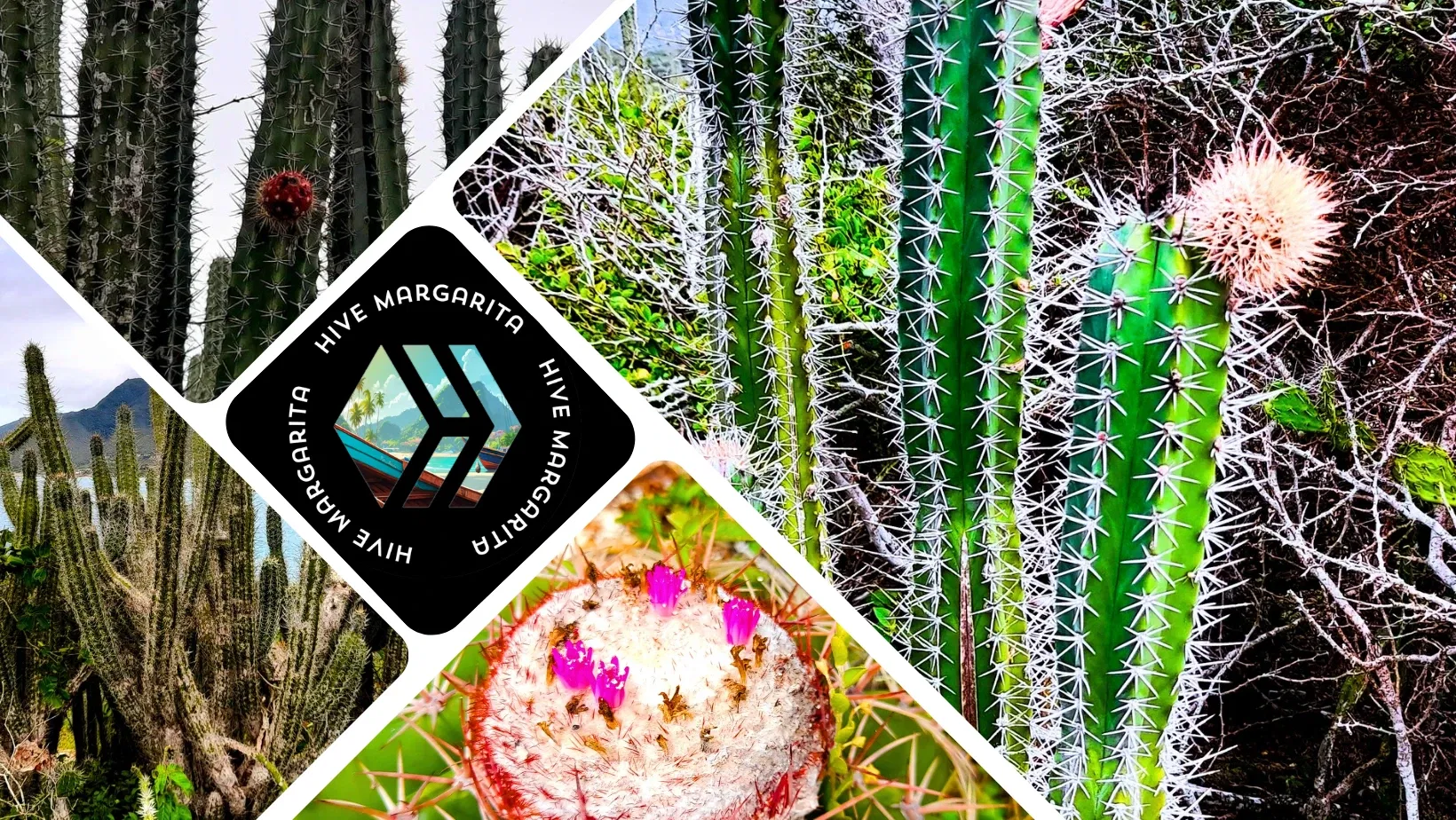

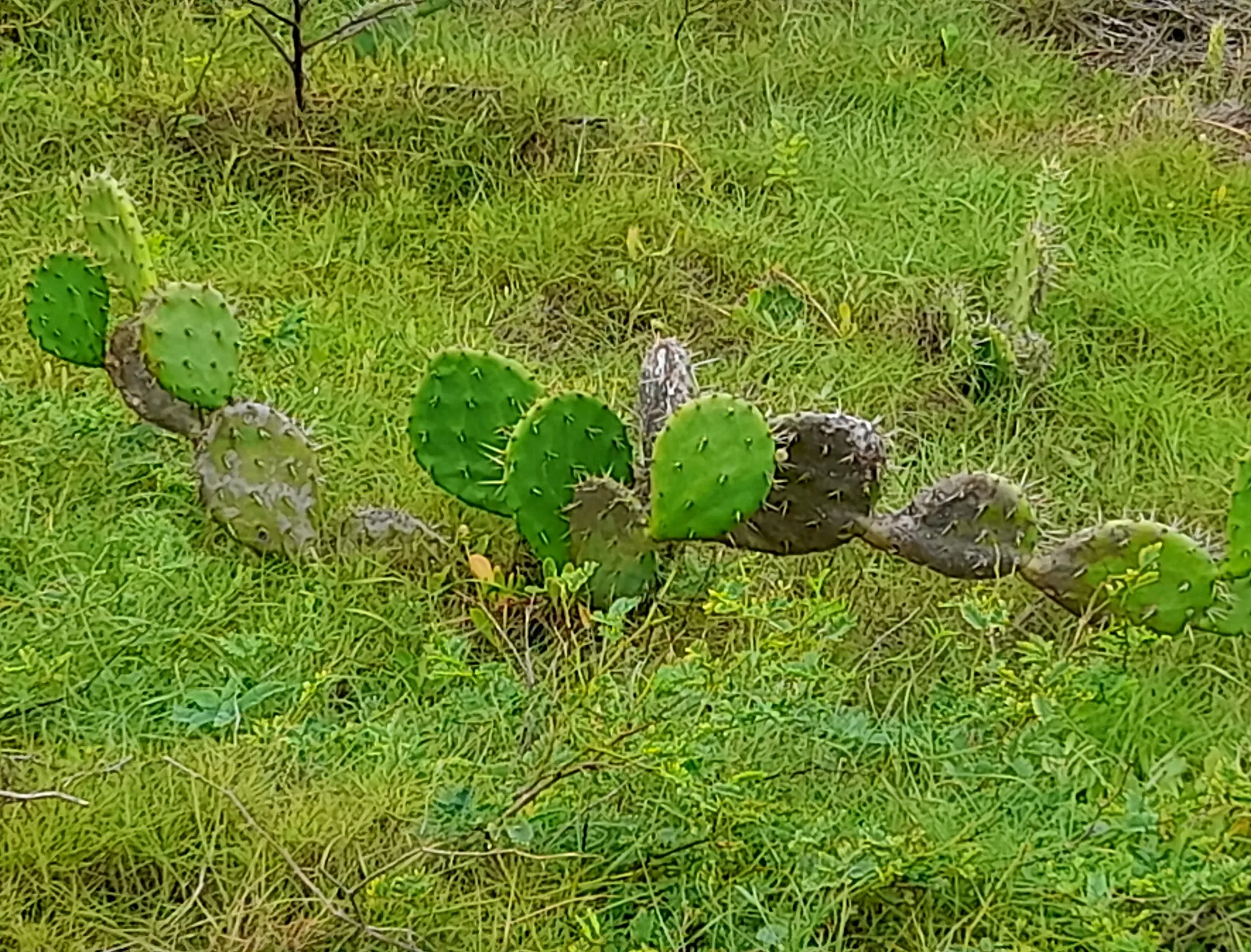
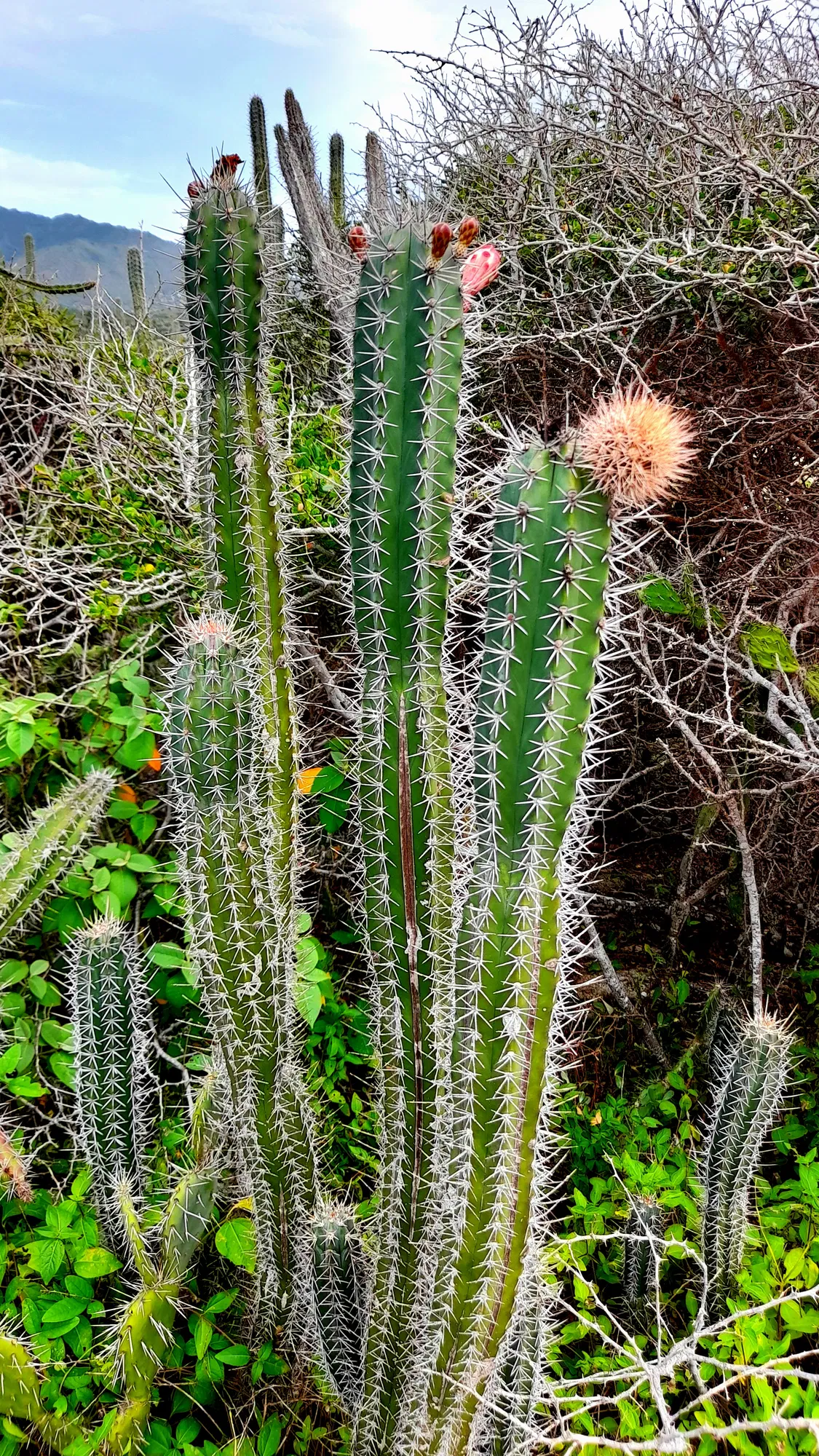
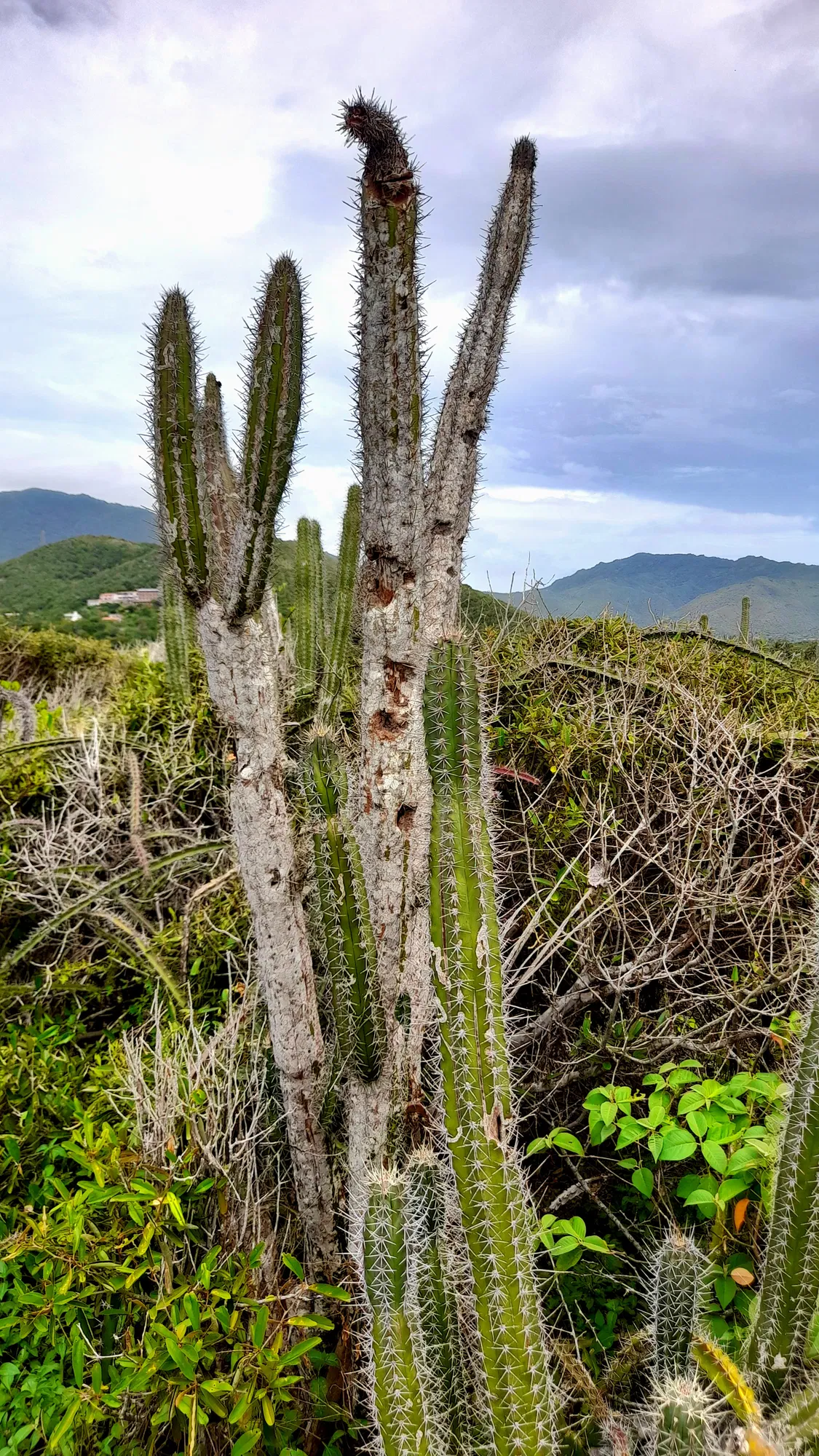
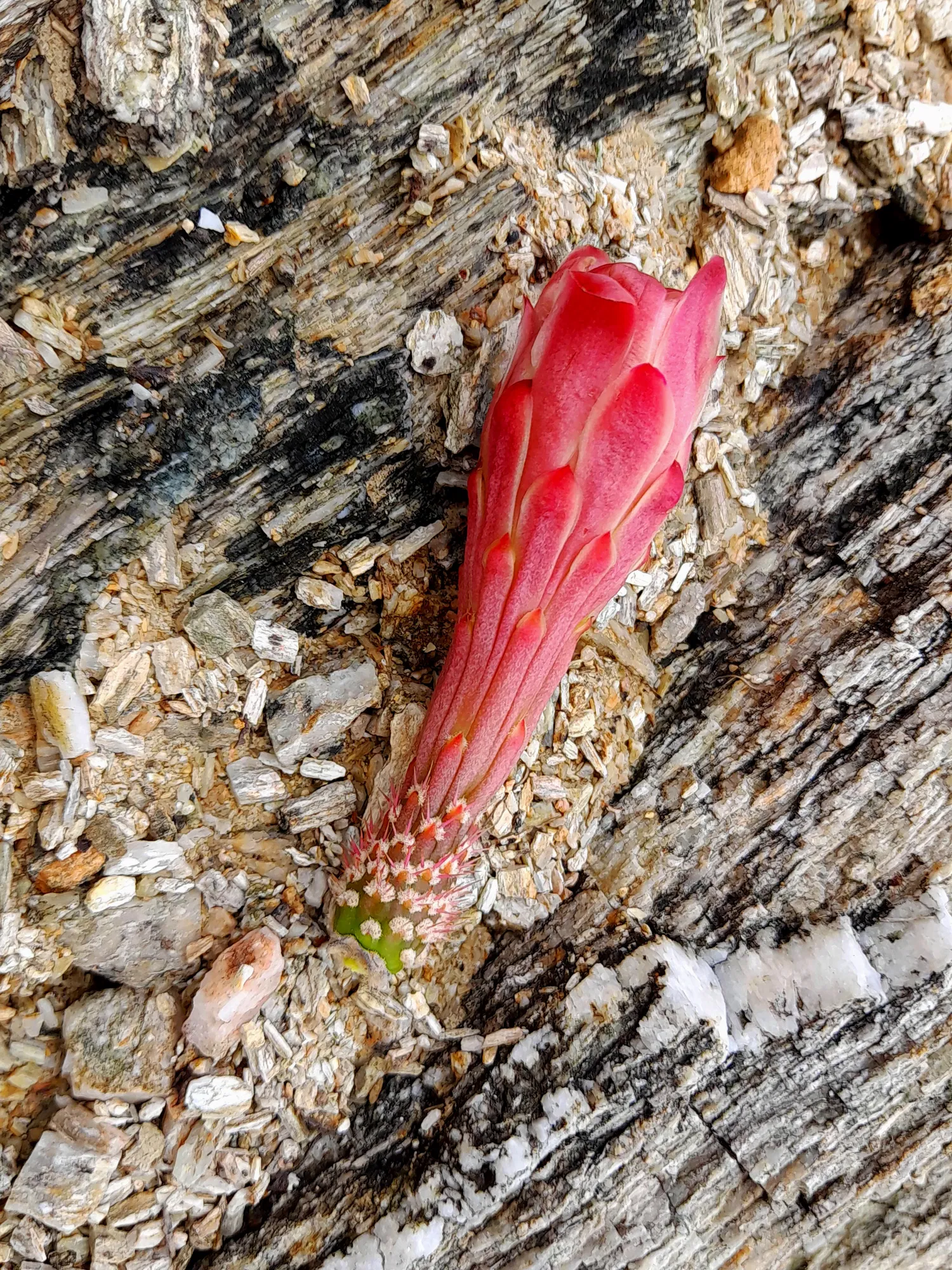
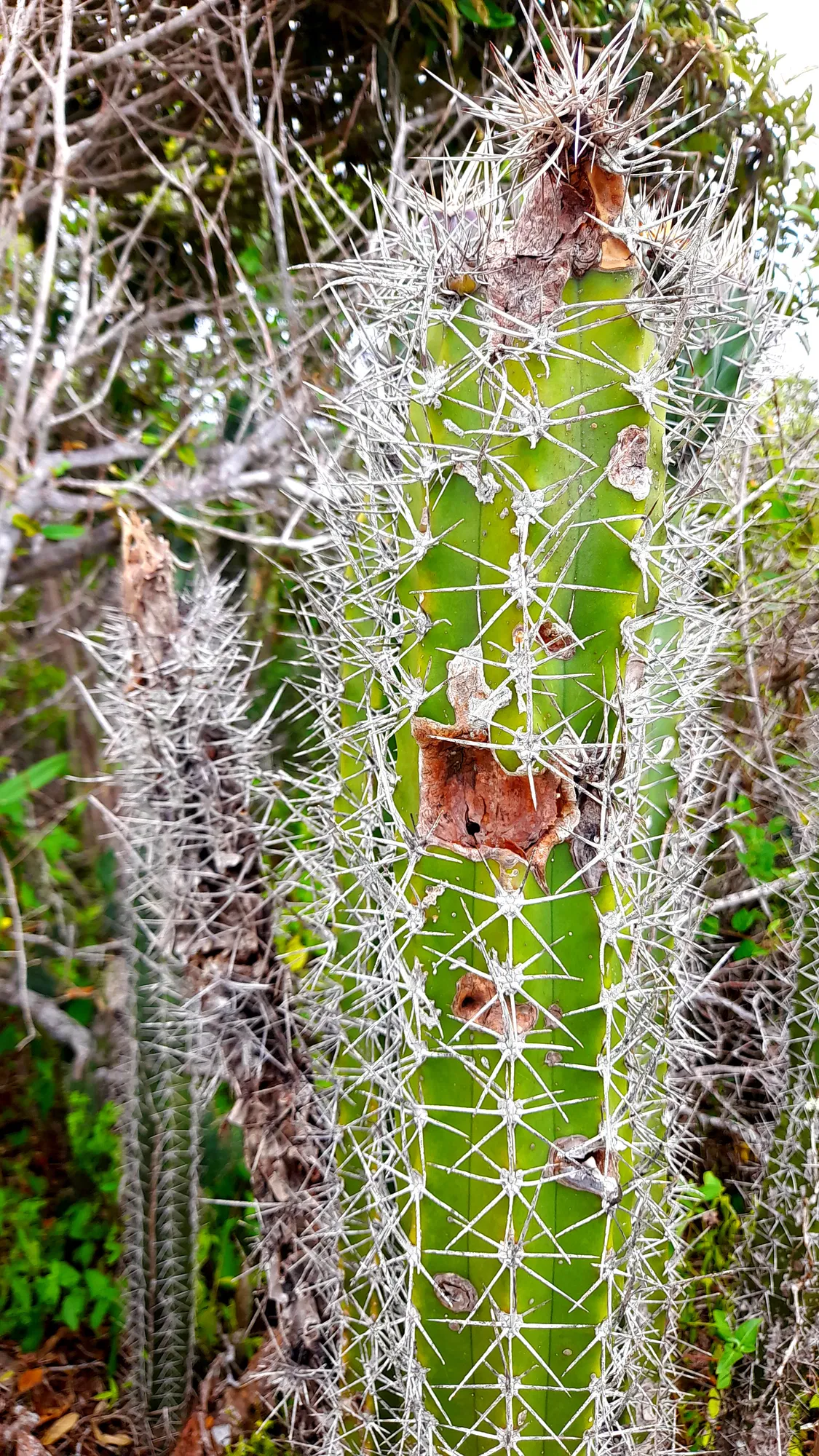
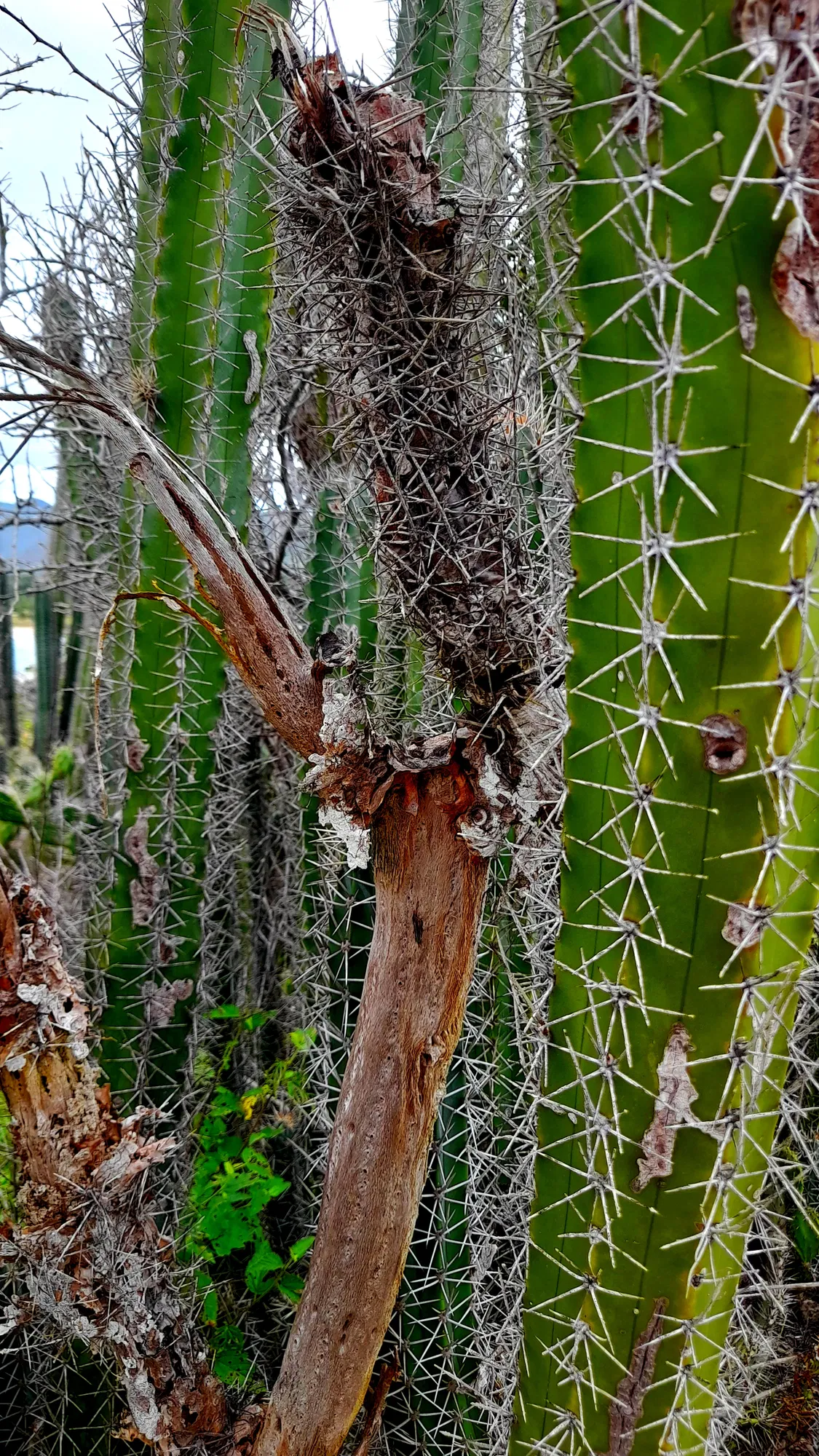
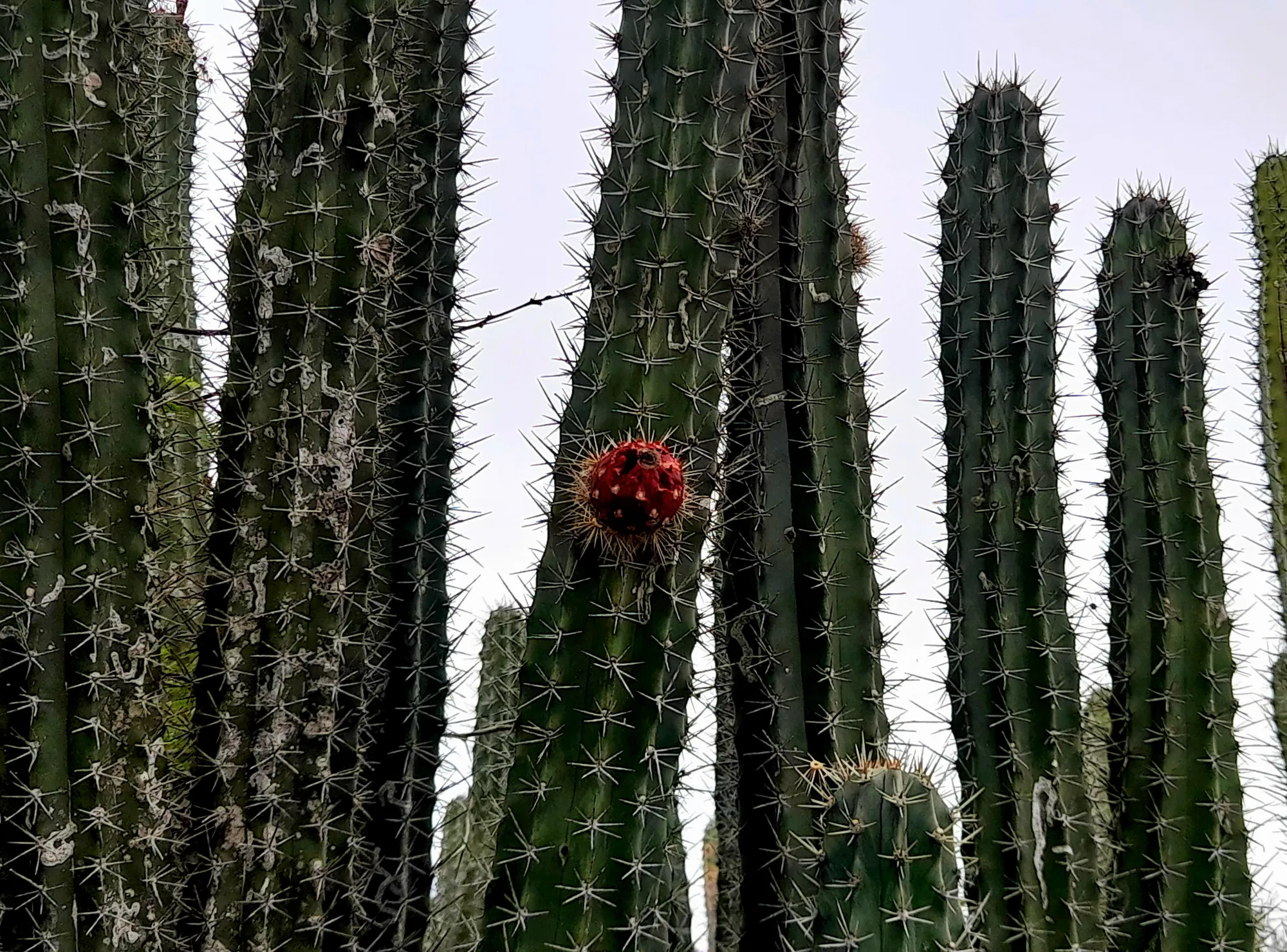

Hace poco junto a mi familia, vivimos una aventura inolvidable, y es que tuvimos una pequeña excursión cruzando el cerro que separa Playa Pargüito de Playa Puerto Abajo, en la bellísima Isla de Margarita, y entre las muchísimas fotos hermosas que traje me di cuenta que tomé un montón de los cactus que se encuentran por todo el lugar, y es que como saben, estos forman parte de la vegetación de nuestro estado, y la verdad es que no sabría explicarles qué es lo que los hace tan irresistibles para mí, pero desde pequeña me han parecido hermosos.
Y quizá ustedes dirán que no son las plantas más lindas, y puede que tengan razón, porque son simplemente unos gigantes brazos verdes, llenos de espinas por todos lados (en el caso del yagüarey), pero a mi me parece que se ven bellísimos y súper imponentes. Díganme si no parecen dueños y señores del lugar? Además hacen súper que el recorrido sea mucho más interesante, una especie de **survivor** venezolano de la que estoy más que segura que no te irás sin por lo menos un pinchazo. Bastante divertido, no?
Recently with my family, we lived an unforgettable adventure, and we had a little excursion crossing the hill that separates Playa Pargüito from Playa Puerto Abajo, in the beautiful Margarita Island, and among the many beautiful photos that I brought I realized that I took a lot of cactus that are all over the place, And as you know, these are part of the vegetation of our state, and the truth is that I could not explain what makes them so irresistible to me, but since I was a child I have found them beautiful. And maybe you will say that they are not the prettiest plants, and maybe you are right, because they are just giant green arms, full of thorns everywhere (in the case of the yagüarey), but I think they look beautiful and super imposing. Tell me if they don't look like lords and masters of the place? They also make the tour much more interesting, a kind of Venezuelan **survivor** from which I am more than sure you will not leave without at least a pinch. Pretty fun, isn't it? Pero volviendo al tema, en este cerro se encuentran distintas especies de cactus, entre ellos el **melón de monte**, un cactus pequeño de forma redonda que crece a nivel del suelo, que tiene un fruto de un tono fucsia súper llamativo, de sabor agridulce con un montón de semillitas redondas de color negro. Este fruto se llama **Pitigüey** y a mis hijos les encanta, y aunque a mí me gusta su sabor, las semillitas al morderlas *"suenan"*, y eso es algo que no me gusta para nada, de hecho por eso no como algunas frutas como el higo. Y sí amigos, tengo mañas de loco, pero ajá 🤣 Este cactus según leí en San Google, está clasificado como **vulnerable** en el ***"Libro rojo de la flora Venezolana"***, que es una especie de guía donde se encuentran las especies amenazadas o en peligro de extinción y las ubica en diferentes estatus, que van desde **vulnerable, en peligro, y en peligro crítico**, y en el caso del **melón de monte** está en estado de vulnerabilidad.
But back to the subject, in this hill you can find different species of cactus, among them the **melón de monte**, a small round cactus that grows at ground level, which has a fruit of a super striking fuchsia tone, with a sweet and sour taste and a lot of little round black seeds. This fruit is called **Pitigüey** and my kids love it, and although I like its flavor, the seeds *"sound "* when I bite them, and that is something I don't like at all, in fact that's why I don't eat some fruits like figs. And yes friends, I have crazy habits, but aha 🤣 This cactus according to what I read in San Google, is classified as **vulnerable** in the ***"Libro rojo de la flora Venezolana "***, which is a kind of guide where threatened or endangered species are found and places them in different status, ranging from **vulnerable, endangered, and critically endangered**, and in the case of the **melón de monte** it is in a state of vulnerability.  Otra especie presente en este cerro, es la que concemos aquí en la isla como **tuna, cardón o yagüarey** que es un cactus que puede crecer muchísimo, hasta 11 metros de altura, leí por ahí, y tienen una especie de brazos con espinas por toda su superficie, de hecho su fruta también está llena de espinas que terminan cayendo cuando está madura. En una de las fotos pueden verla tanto verde como madura, y como ven a esta última se la habían estado comiendo los pajaritos. Esta especie es la que más abunda en este cerro del Municipoo Antolín del Campo, y hay algunos que por el grosor y color de sus espinas parecen tener muchísimos años en el lugar. Esos fueron mis favoritos... y es que parecen sobrevivientes de una guerra terrible, y si te pones a pensar, en realidad sí lo son, ellos sobreviven día a día al clima súper caliente de nuestra isla, a la intemperie, la ausencia de agua, y además a la cantidad de animalitos que se encuentran en el cerro.
Another species present in this hill, is the one we know here on the island as **tuna, cardón or yagüarey** which is a cactus that can grow very tall, up to 11 meters high, I read somewhere, and they have a kind of arms with thorns all over its surface, in fact its fruit is also full of thorns that end up falling when it is ripe. In one of the photos you can see it both green and ripe, and as you can see the latter had been eaten by birds. This species is the most abundant in this hill of the Municipoo Antolin del Campo, and there are some that by the thickness and color of their thorns seem to have many years in the place. Those were my favorites... and they look like survivors of a terrible war, and if you think about it, they really are, they survive day by day to the super hot climate of our island, the weather, the absence of water, and also the number of animals that are found on the hill.  Y por último también pudimos ver en nuestro recorrido al **nopal o tuna**, una especie de cactus que crece de forma similar a un arbusto, y en este caso es la especie de la que menos vimos ejemplares en el cerro, y como pueden ver, no crecen en grupo como los yagüareys, sino que estaban solas, algunas bastante débiles por cierto, y creo que esto se debe a lo delgada que son sus ramitas o pencas, por lo que no acumulan tanta agua como el melón de monte y el yagüarey, y en consecuencia el clima extremo de la zona hace de las suyas. De estas tres especies mi favorita es el yagüarey, y no se debe a la belleza de la planta como tal, sino que al crecer en columnas y una al lado de la otra, para mí parecen un pequeño ejército o algo así, porque definitivamente solas no tienen el mismo impacto visual. A ustedes cuál de las tres les gusta más?
This species is the most abundant in this hill of the Municipoo Antolin del Campo, and there are some that by the thickness and color of their thorns seem to have many years in the place. Those were my favorites... and they look like survivors of a terrible war, and if you think about it, they really are, they survive day by day to the super hot climate of our island, the weather, the absence of water, and also the number of animals that are found on the hill. And finally we could also see in our tour the **nopal or tuna**, a species of cactus that grows similarly to a shrub, and in this case is the species of which we saw fewer specimens on the hill, and as you can see, they do not grow in groups like the yagüareys, and as you can see, they do not grow in groups like the yagüareys, but alone, some of them quite weak, and I think this is due to the thinness of their twigs or stalks, so they do not accumulate as much water as the mountain melon and the yagüarey, and consequently the extreme climate of the area does its thing. Of these three species my favorite is the yagüarey, and it is not due to the beauty of the plant as such, but because they grow in columns and one next to the other, for me they look like a small army or something like that, because definitely alone they do not have the same visual impact. Which of the three do you like best? 
📷Photography by|Fotografía por:@rlathulerie, 🔅 Cover created in/Portada creada en Canva, Separator and banner/separador y banner, 🇺🇸Translated with www.DeepL.com/Translator (free version)
For the best experience view this post on Liketu